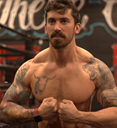Guest Blogger: Matthew Collins
The world is a different place nowadays. Things have changed due to obvious reasons (the global COVID pandemic is what I mean), and in many ways they’ve changed for good.
People are working from home, industries have morphed completely, we’ve lost access to certain things we loved while gaining access to others that never existed before. We’ve had to adapt.
The health, wellness and fitness industry is no different than any other these days. We were pretty much shut down without warning. And even worse, in a lot of places it went something like this…
- shut down
- open back up with restrictions
- shut down again
- reopen outside
- shut down again
Tens of thousands of gym closures, hundreds of thousands of trainers out of business and millions more gym members who just wanted to work out to keep fit, learn about fitness and enjoy the motivational and social benefit of attending their fitness classes each week are also out of luck.
However, there’s another way that many people have adopted and many more people have yet to try to keep up with their fitness goals: Online Fitness Coaching.
I’ve been doing this a while now and I have to tell you, online clients tend to yield better results than in-person clients… sounds crazy, I know!
Online fitness coaching, especially in the day and age we are in today, offers so much value. You get your fitness workout delivered online to your favorite device. You then log on and workout at a time that suits you, or, depending on the program you buy, you can join live online classes and work out with others. Kind of like a workout Zoom meeting. Each variation will appeal to some and not others, but there are programs out there to suit every schedule, fitness level and personality type.
You can opt to increase your commitment to your fitness by not only joining a class but working with a dedicated online fitness coach. They will be able to tailor workouts, eating plans and motivation to suit your needs and your unique situation.
These days, honestly, your average individual is going through some tough times. People are feeling fat, lonely, depressed and they have no plan or hope in sight to get them out of this deep ditch they may have found themselves in.
Online fitness coaching can help. If you lost access to your gym, or grew tired of the sporadic nature of the openings and closures of your fitness center, then online fitness coaching may be a fantastic option for you.
- comprehensive workouts
- a tailored approach
- unrelenting accountability
- support, structure and an overall approach to fitness that many people welcome
Pre-COVID, in person clients tend to come into the fitness session ready to kick butt, get stronger, feel great and go back home. Sounds good? Well, they then they proceed to do whatever the heck they want the rest of the week. You see them 2-3x/week and when they aren’t with you, you’re hoping they come back with good behavior! Often times, however, they’ll come back saying they partied, ate badly, and feel like they are starting from square one again. Which often, they are.
Online fitness coaching, when done right, doesn’t allow this nonsense. A good coach is on your back DAILY, holding you accountable and making sure the necessary tasks get done to move the needle and to get you to the desired fitness level you want to achieve.
The only caveat – you, the client, needs to make this work.
When you hire any online fitness coach, you need to utilize them. Reach out to them when you’re struggling with something. Let them know, realistically, what you’re dealing with. They can tailor nutrition, workouts and even some kind words to help you through your challenges.
- Do you have a question about the food you’re eating? Send a text
- Are you unsure about the form for your squat? Send a video
- Find you’re confused about meal proportions or selections? Send a photo
Get the feedback you need when you need it to avoid making the wrong decision. This is the type of support online fitness coaching can offer.
But, even a great coach isn’t a mind reader and needs you to be present in the situation. Help them help you.
Online fitness coaching, as with anything else, has different options based on what you desire and what your budget looks like:
- Low price, low support
- Mid-price, moderate support
- High price, high support
Know what you need and what resources you have at your disposal when researching the fitness coach that’s right for you.
At its best, online fitness coaching can be an amazing thing. It allows you to be catered to throughout the process, have a solid plan to follow and the support to guide you there every step of the way (depending on what service you select).
At its worst, you’ll get a workout plan that doesn’t fit your body or your needs and leaves you in the same place you started. That’s why research is key so you can maximize your potential.
If you’re ready to explore hiring an online fitness coach or online fitness program, here are some questions to ask:
- You’ll want to know which classes, workouts and programs are offered at the various pricing levels
- Things change and you may find yourself busier or on a different work schedule. You may also start working out and decide that mornings or evenings or weekends are a better option for you. Learn how flexible this coaching program will be.
- Although what matters is how you like the fitness program, the coach, perhaps the others in the program if it is a group program, but you may benefit from checking out the reviews or testimonials from past clients.
- Online fitness coaching can work for the very beginner all the way through to the elite athlete. Make sure the coaching program you are selecting is one that fits with and caters to your fitness level, and where you want to go.
- Several online fitness coaching programs have different levels of services. Ask what happens if you sign up for one level and then decide you want to upgrade/downgrade. Typically it is no problem, but ask as each company operates differently.
The beauty is, in the challenging world we’re living in these days, you can maximize your fitness potential from the comfort of your home.
No equipment? Don’t worry. I have clients who have zero equipment and they are making consistent progress. The more stuff you have, the better (everyone likes variety and extra resistance), but it’s doable to transform your body inside and out with just you and gravity.
Get started today. You can always contact me first as you start to research your next online fitness coach. I’d be happy to talk with you and see how we may be able to work together. The last thing you’ll do is regret it and the first thing you’ll do is start to love what you see in the mirror again.
Matt Collins leads The Fitness Accelerator. Learn more about Matt and his programs here www.dreambodyaccelerator.com

